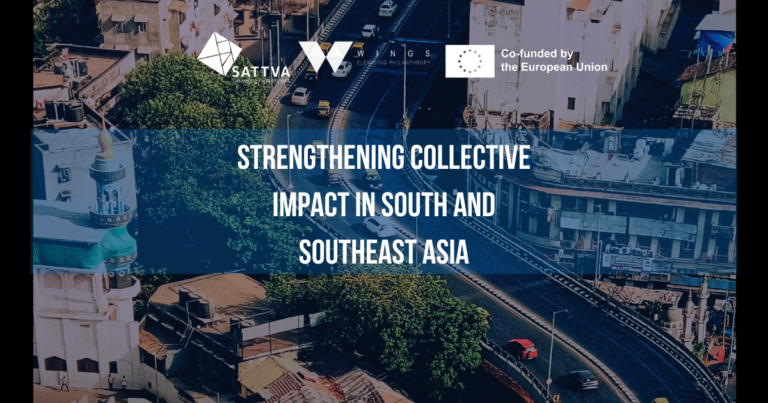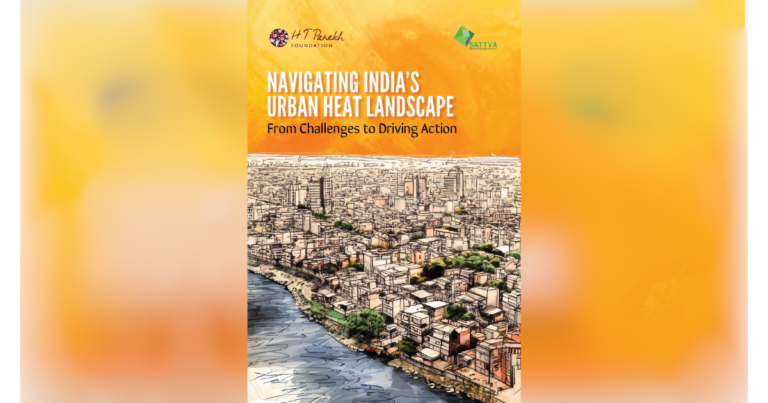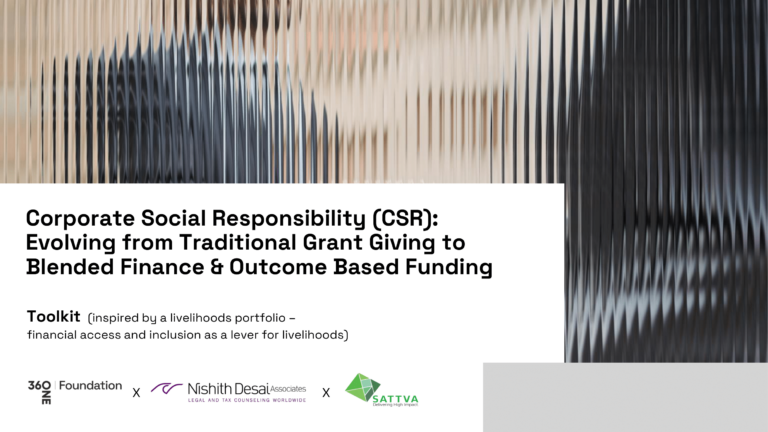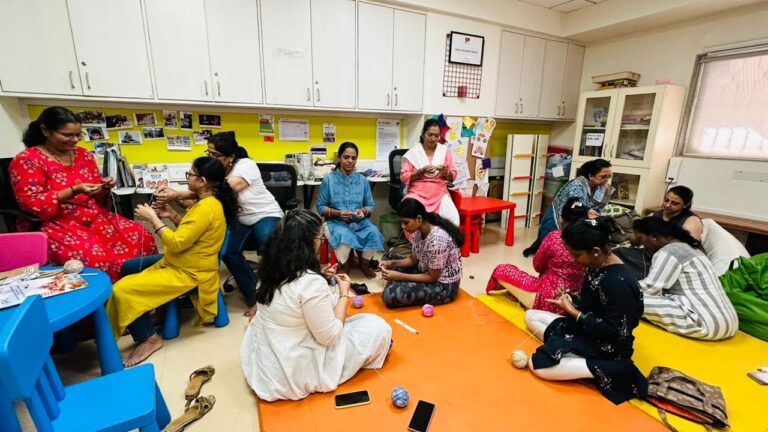Source: Alliance Magazine
Kriti Jain and Lekhya Reddy
16 March 2023
As philanthropy in India increasingly shifts from dollars to rupees, there is a need to understand how philanthropic capital can be used in a more catalytic manner towards creating better impact in India, with a specific focus on ‘blended finance’. The session was hosted by Dasra in partnership with Sattva Consulting.
The panel comprised diverse stakeholders including Dipesh Sutariya, Chairperson and MD EnAble India Group; Lakshmi Pattabi Raman, Director of Investments at Omidyar Network India (ON India); Dr Sarika Kulkarni, Managing Trustee, Raah Foundation; Saumya Lashkari, Director 360 One Foundation; and was moderated by Anantha Narayan, Advisor, Sattva Knowledge Institute.
Setting the tone for the session, Anantha, called on the participants to reimagine philanthropy in India by saying: ‘As dollar philanthropy is being replaced by rupee philanthropy, there is a need to make it more efficient and leverage it as much as possible for more impactful giving.’
‘Blended finance is not a one-size-fits-all solution. It needs to be seen through the lenses of: (1) the problem that needs to be solved and (2) the kind of capital that is required to solve it’, said Saumya, profoundly capturing the theme of the discussion. The panel highlighted the different models and groundwork to be done for adopting a ‘blended finance structure’ as Lakshmi says is a new model of philanthropy.
Towards a catalytic approach to Indian philanthropy
Sattva Consulting presented an overview of the evolving philanthropic landscape in India and blended finance’s potential to address unequal opportunities. Palagati Lekhya Reddy said, ‘Philanthropy in India is seeking more structured and informed giving, including new forms of social and impact investments.’
The panellists all agreed on the observed trend of philanthropists becoming more catalytic in their giving approach by considering the nature of capital needed, the journey of philanthropic capital, and the problem to be solved.
Blended finance to unlock private capital for social impact
All panellists echoed the need for unlocking greater development finance by derisking social investments for the private sector and allocating it more efficiently towards development outcomes. Anantha highlighted the ability of blended finance to have a significant impact on underserved communities. On a continuum of funding, he said, ‘blended finance can offer not just financial, but positive environmental and social returns’.
Bringing out why they chose to adopt blended finance in recent years, Saumya said ‘At 360 ONE Foundation, we are committed to maximise both financial and social returns. We re-imagined traditional grant-giving and evolved a more catalytic approach through innovative, CSR compliant blended finance instruments. Our goal is to deliver better outcomes and exponential impact for underserved communities through increased leverage of CSR funds’.
‘Dual chequebook’ approach to drive optimal capital allocation
Explaining ON India’s ‘dual chequebook’ approach to philanthropy, Lakshmi said, ‘to achieve our goal of creating a meaningful life for the Next Half Billion, we use an approach that enables flexible deployment of capital using multiple tools including equity investment in early-stage enterprises. This approach allows for optimal allocation of capital, activation of multiple pathways to impact, and amplification of impact at the sector level.’
To elaborate on what this means, she said that they support ‘bold entrepreneurs’ across sectors, exemplified by their investments for equity returns, market infrastructure development, innovative financial instruments, research, and surveys to spotlight gaps and solutions, promoting the power of technology for good, and funding for lighthouse projects with a demonstration effect.
Returnable grants, a powerful tool for deeper and wider social change
Dr Sarika summed up the concept of returnable grants as a form of blended finance that promotes ‘change without charity’. She explained that returnable grants enable community involvement and bring down the overall costs of the project, in turn allowing for broader and deeper outreach.
Lakshmi emphasised the moral obligation that this approach creates on the communities, which not only encourages saving, but also helps recycle and circulate the money to other grantees, thereby creating a multiplier effect. Dr Sarika, however, said that it is critical to incorporate the right key performance indicators while designing such programmes along with pilot testing them.
Bridging the gap between vision and action through Social Venture Fund (SVF)
‘The biggest challenge in the development sector is having 30000 feet view of thinking, while having feet on the ground’, said Dipesh. For him, the initiation of SVF at EnAble India is an effort towards bridging the gap and investing in social change to improve the lives of people with disabilities. This requires using a ‘balanced scorecard’ tool to bring together different organisations with different visions to achieve balanced outcomes, while using the right financial instruments to do so. For Dipesh, ‘the user is at the centre of the process’. In closing he touched upon the ‘setup-build-operate-transfer-and-sustain model’ as the thought behind the SVF.
Raising the bar for impact reporting with rigour, accountability, and transparency
Saumya identified higher standards of impact reporting as a differentiating factor between a blended financial model and traditional philanthropy. Dr Sarika further discussed the need to create better frameworks for measuring social impact beyond financial returns such that programmes are evaluated fairly and effectively, creating a virtuous cycle of growth and development. She emphasised the importance of including qualitative outcomes such as self-esteem and dignity, which are essential traits that sustain any programme.
Further, Lakshmi stressed the importance of impact reporting as a critical component of evaluating programmes that utilise blended finance, ‘As we move towards increased use of blended finance models, we need to work together to shift the focus from inputs and activities to more long-term outcomes and sustainable impact. This requires more dialogue amongst all stakeholders on what are the simple ways of measuring and reporting that impact without making it complicated and cumbersome for the grassroot organisations.’
Taking a cue from this line of thought, Anantha called out the need for clear definitions and reporting standards for tracking and reporting outcomes and making impact reporting more efficient and streamlined.
The road ahead for making blended finance structures work
Personal belief and funder conviction about the benefits of the blended finance structure are important to make it successful and sustainable in the long run. Dr Sarika emphasised the need to include cost per outcome in the design of blended finance models to capture true costs. She also urged NGOs to have more operational and financial flexibility to achieve outcomes, with capacity building support through training and technology.
Towards the end of the session, underlining the unique nature of grants as a form of capital, which is patient, risk-tolerant, seeks no return, provides concessionality and brings in commercial capital, Saumya said that using grants to enable blended finance, where applicable, is a win-win.
Agreeing on the importance of grants to unlock more development funding and the need to move towards innovative financing models for impact, Dipesh warned that ‘in focussing on rupee to rupee, we must not forget the criticality of social and human capital in achieving impact at scale, to truly make a difference in the lives of those who are most vulnerable’. It is important to look at the intersection of all three lenses, he concluded.
Source: Alliance Magazine, 16 March 2023




